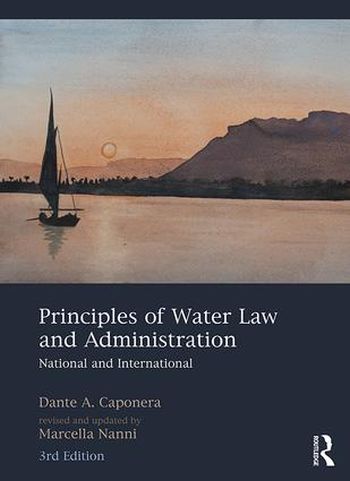Principles of Water Law and Administration: National and International 3rd ed (eBook)
ISBN13: 9780429879425
Published: May 2019
Publisher: Routledge
Country of Publication: UK
Format: eBook
(ePub)
Price: Out of print
The amount of VAT charged may change depending on your location of use.
The sale of some eBooks are restricted to certain countries. To alert you to such restrictions, please select the country of the billing address of your credit or debit card you wish to use for payment.
Sale prohibited in
Korea, [North] Democratic Peoples Republic Of
Due to publisher restrictions, international orders for ebooks may need to be confirmed by our staff during shop opening hours. Our trading hours are Monday to Friday, 8.30am to 5.00pm, London, UK time.
The device(s) you use to access the eBook content must be authorized with an Adobe ID before you download the product otherwise it will fail to register correctly.
For further information see https://www.wildy.com/ebook-formats
Once the order is confirmed an automated e-mail will be sent to you to allow you to download the eBook.
All eBooks are supplied firm sale and cannot be returned. If you believe there is a fault with your eBook
then contact us on
ebooks@wildy.com and we will help in resolving the issue. This does
not affect your statutory rights.
This eBook is available in the following formats: ePub.
Need help with
ebook formats?
This book, which was first published in 1992 and then updated in 2007, provides a tool for dealing with the legal and institutional aspects of water resources management within national contexts and at the level of transboundary water resources. Like its two previous editions, it seeks to cover all aspects that need to be known in order to attain good water governance, but it provides updates concerning developments since 2007.
These relate, inter alia, to the following:
- the “greening” of water law, which calls for the progressive integration of environmental law principles into domestic and international water law;
- the adoption, by the International Law Commission in 2008, of the Draft Articles on the Law of Transboundary Aquifers, and subsequent developments;
- the emergence of the right to water as a self-standing human right;
- the adoption of domestic water laws supporting integrated water resources management (IWRM) and enhanced public participation in planning and decision making;
- the integration into these laws of tools facilitating adaptive water management as a response to climate variability and change;
- progress in the implementation of EU law;
- recent international agreements and judicial decisions;
- efforts of regional organizations other than the EU to steer cooperation in the management of transboundary water resources and the harmonization of national laws;
- institutional mechanisms for the management of transboundary water resources (surface and underground).
Unique in its scope and nature, the book identifies the legal and institutional issues arising in connection with water resources management and provides guidelines for possible solutions in a manner accessible to a wide range of readers. Thus, it is a useful reference for lawyers and non-lawyers — engineers, hydrologists, hydrogeologists, economists, sociologists — dealing with water resources within government institutions, river basin commissions, international organizations, financing institutions and academic institutions, among other things, and also for students of disciplines related to water resources.
